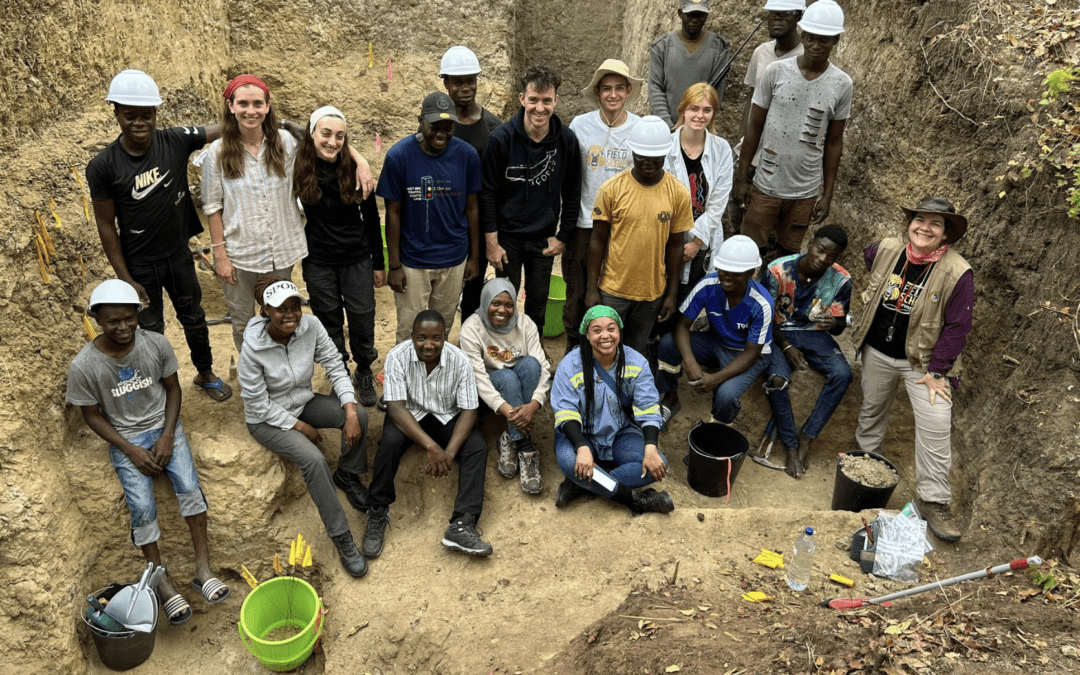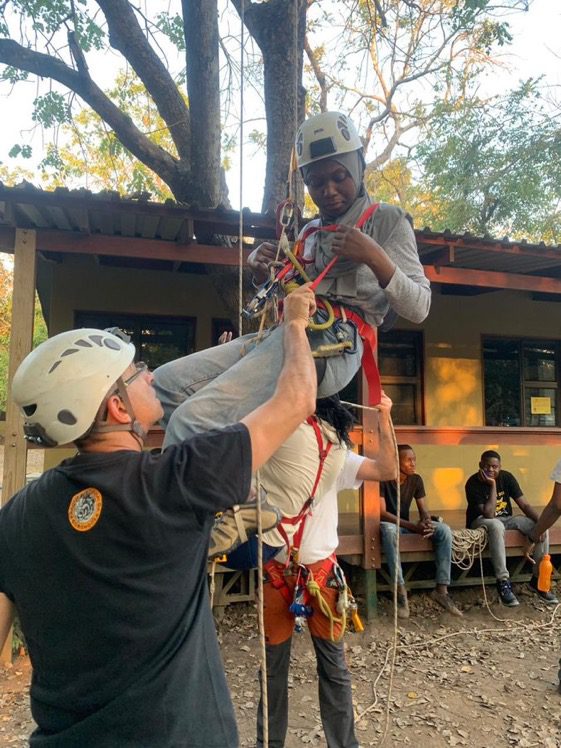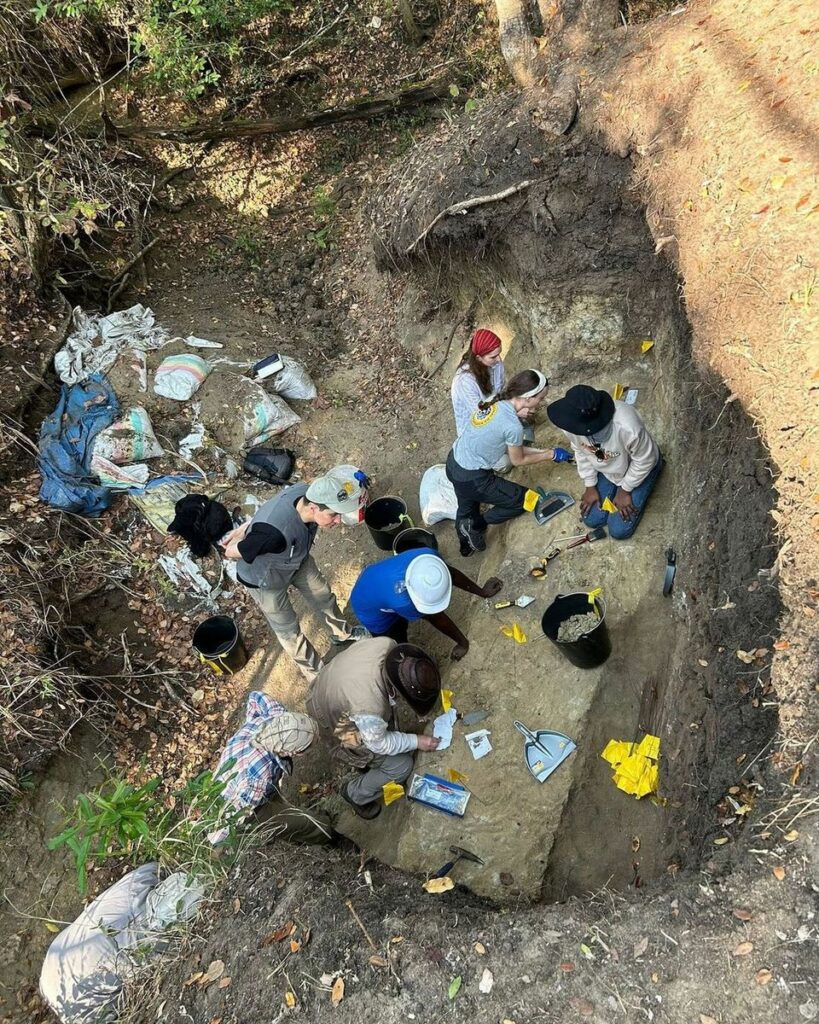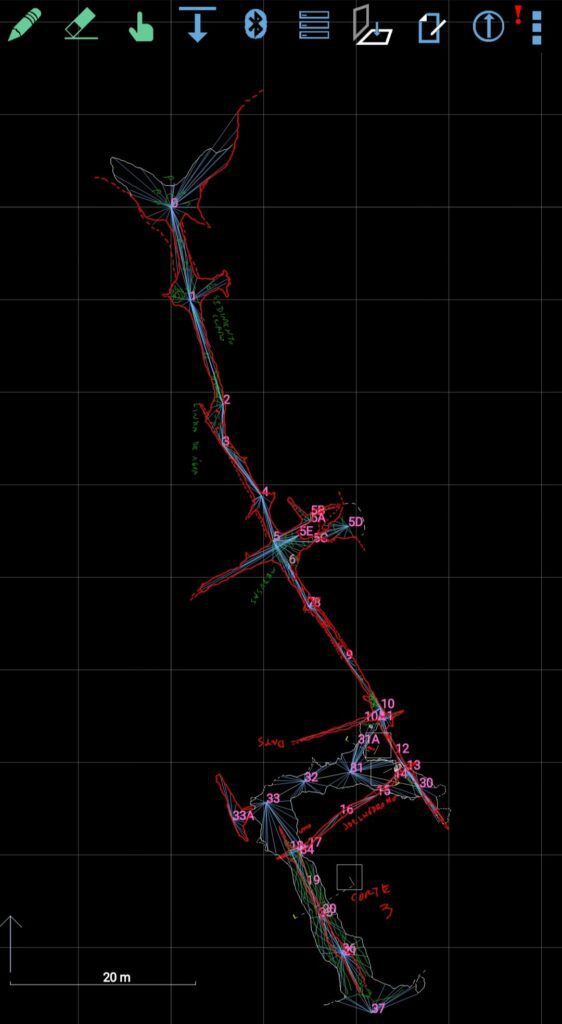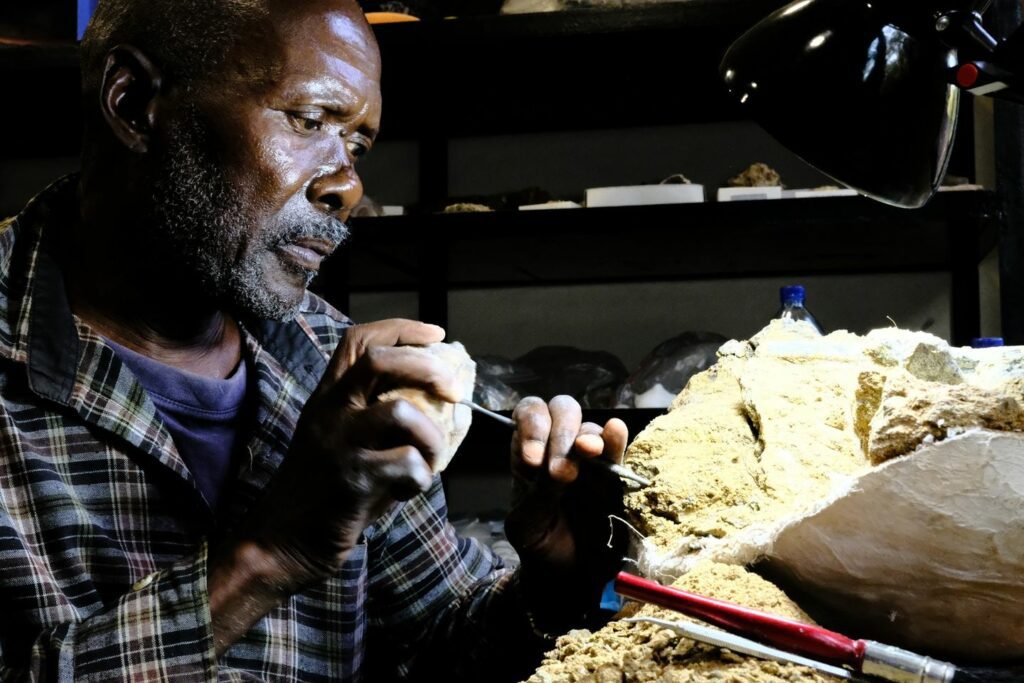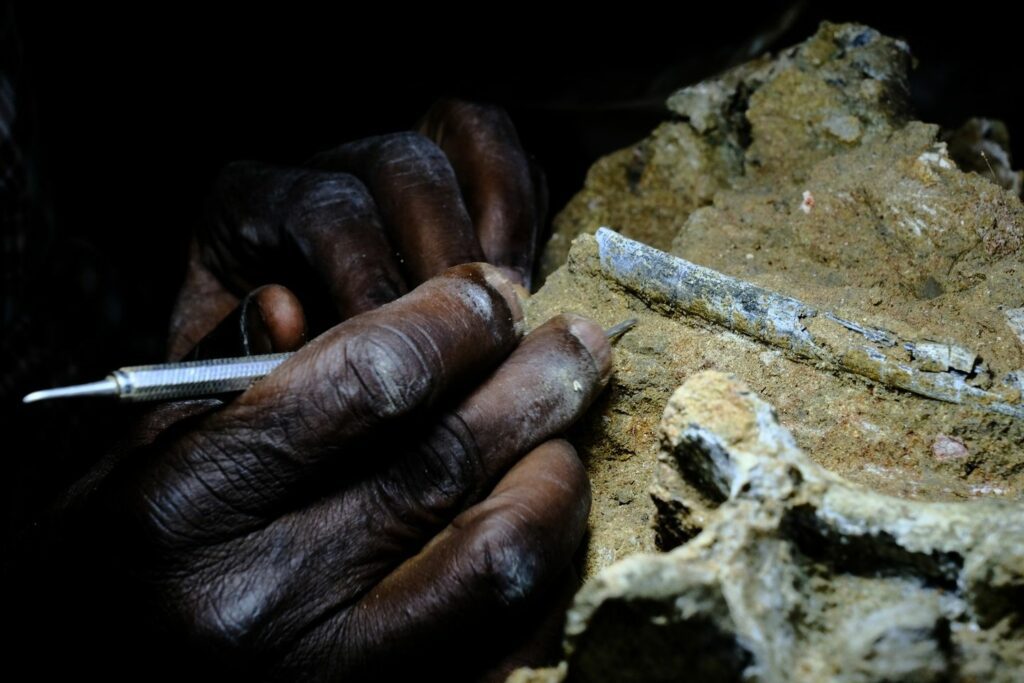Top photo – The Gorongosa Paleo-Primate Project Team on a dig with students from the Gorongosa Interdisciplinary Field School in Human Evolution.
The Gorongosa’s Paleo-Primate Team continues to be at the forefront of uncovering the Earth’s deep past, training the next generation of scientists, and sharing these discoveries with the world.
During the past few months, the team is making remarkable strides once again, unearthing Miocene Era fossils that reveal ancient species and the environments in which they evolved. These findings are key to understanding the long history of life in the region, deepening knowledge of human evolution and the natural world.
The team’s efforts are supported by the students enrolled in the Gorongosa Interdisciplinary Field School in Human Evolution. This year’s cohort received hands-on training in geology, archaeology, and Mozambique’s own archaeological history. Highlights included practical sessions on archaeological excavations and rope techniques to access caves—an essential skill given the rich discoveries made underground.
Gorongosa’s speleology team has explored and mapped over 100 caves in the region, many of which are documented for science for the first time, with some holding immense promise for future studies.
A key figure in the success of this project is Pepson Mukanela, a Zen master in fossil preparation. With decades of experience working with fossils at the Evolutionary Studies Institute in South Africa, Mukanela meticulously cleans and reconstructs ancient fossil fragments, transforming them into invaluable scientific artifacts. His careful work allows scientists to study the detailed anatomy of these fossils without damaging them, helping to unveil the rich history of life on Earth.
Pepson Mukanela, cleaning and reconstructing ancient fossil fragments.
Mukanela’s passion for his craft is matched by his dedication to teaching. He has trained over 100 students through the Interdisciplinary Field School in Human Evolution in the art of fossil preparation, including generations of future Mozambican scientists who will continue to bring their ancient world to life.
Set at the southern end of Africa’s Great Rift Valley, Gorongosa National Park is part of the most well-known rift system on Earth. This 30-million-year-old geological system is home to volcanoes, hot springs, and geysers—a landscape that continues to shape the region today.
